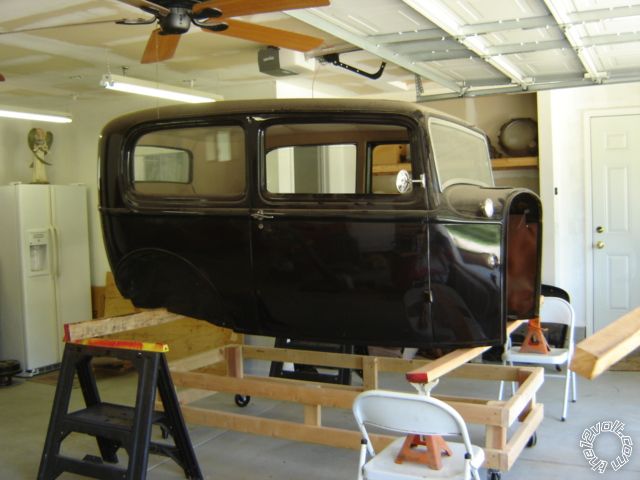interior light dimming to off
Printed From: the12volt.com
Forum Name: Car Security and Convenience
Forum Discription: Car Alarms, Keyless Entries, Remote Starters, Immobilizer Bypasses, Sensors, Door Locks, Window Modules, Heated Mirrors, Heated Seats, etc.
URL: https://www.the12volt.com/installbay/forum_posts.asp?tid=121871
Printed Date: May 28, 2024 at 7:15 PM
Topic: interior light dimming to off
Posted By: akuhead
Subject: interior light dimming to off
Date Posted: May 16, 2010 at 10:02 PM
Just back from vacation and my 50th high school reunion. Had a rental car that the interior lights that dimmed to off after door closing and slowly lit up when the doors were opened. I like that feature and am wondering if I could add it to my old car? Is it a box of some sort that does this, or a feature of some sort of car computor, or could the feature be added using relays, capacitors, etc? My car is a 32 Ford, will be run on a 12 volt system
Thanks
Jim
Replies:
Posted By: i am an idiot
Date Posted: May 17, 2010 at 7:05 AM
This should be easily accomplished with a resistor, capacitor and a diode. All parts should be available at Radio Shack. I need to know a little more about the lighting circuit of the vehicle. Is the lamp supplied with a constant positive voltage and gets its ground via the door pin switch, or vice versa?
Posted By: akuhead
Date Posted: May 17, 2010 at 11:27 AM
Thanks for the response. The lamp(s) will be supplied with constant 12 volts, and I'll probably use switches in the doors that ground upon opening. However, it doesn't have to be that way. I'm open to any and all options, as I'm just now starting to wire the vehicle. Any assistance is really appreciated Jim

Posted By: howie ll
Date Posted: May 17, 2010 at 1:33 PM
Wired the way you said is how 90% of car interior lights are wired, you can also get a Velleman kit to do this, it's more sophisticated in that it will turn off your dome light(s) immediately you turn on the ignition. Or a DEI 528t with an extra ignition switched relay.
Posted By: i am an idiot
Date Posted: May 18, 2010 at 6:21 AM
I will draw you a diagram tonight.
Posted By: akuhead
Date Posted: May 19, 2010 at 12:00 AM
Thanks so much guys. I appreciate the info
Posted By: oldspark
Date Posted: May 19, 2010 at 2:27 AM
Although I think I have a better circuit using a 2N3055, have a look at domelightdimmer91.
There are others using Op-Amps, but I think discrete components are better....
Posted By: i am an idiot
Date Posted: May 19, 2010 at 8:49 AM
Oldspark, will that give him a gradual on and a dimming off?
Posted By: oldspark
Date Posted: May 19, 2010 at 8:34 PM
No - only off. But that's explained in the article.
Should be easy to add a soft-on.... but I'm still looking for my older circuit.
Posted By: akuhead
Date Posted: May 19, 2010 at 10:26 PM
Also, what's a 2N3055? Thanks Jim
Posted By: i am an idiot
Date Posted: May 21, 2010 at 6:57 AM
2n3055 is a transistor, it is available at Radio Shack. How many lights are you going to have that are controlled by this circuit? Do you happen to know the wattage of the lamps or the part number of them. Also how long do you want them to remain on after the door is closed?
Posted By: akuhead
Date Posted: May 25, 2010 at 3:54 PM
There are going to be three light bulbs controlled by this circuit. Probably all three will be 3 watts. I don't know about the time to off function. Maybe 5-10 seconds, no more. I'm not particular. Just thought it would be kinda cool. You guys are great and have a super forum. I really appreciate you all taking the time to give me suggestions, etc. Thanks again
Jim
Posted By: oldspark
Date Posted: May 25, 2010 at 8:33 PM
I'm still looking....
I know I also saw the real device recently - a T03 packaged 2N3055 with the components bird's-nested on (no PCB etc). If I find that, I can reconstruct the circuit diagram.
The 2N3055 handles a max of 15A; 10A is reasonably common.
Mine wasn't heatsinked, but was covered in araldyte (because the case of the 2N3055 is "live") and it would get warm-hot with a 10W bulb whilst actually dimming. (That's why I wrote "live" instead of "hot" - ie, +12V.)
Anyhow, 1A of load is no problem, but higher requires a heatsink.
These days dimming id done with PWM circuits so there is minimal heat.
Of course, it's probably easier designing from scratch...
Posted By: oldspark
Date Posted: July 12, 2010 at 4:37 AM
Victory to the patient! (Read: As a foggy photographic memory clears...)
From "Simple Projects from Electronics Today" page 85 (Published 1975):
The circuit:

And its birdsnest layout:

It is connected in parallel with the grounding door switch (ie "+VE" to switch & "-VE" to GND/chassis).
Be aware that the 2N3055 body is hot - both in terms of being +12V (but thru the dome/courtesy light) when the door switch is open, and also during operation depending on the load.
The circuit could be on the hot-side of the lamp provided the switch shorts out +VE & -VE (as in +ve chassis/GND vehicles).
When off, there should be no battery drain.
Operation:
The door switch closes (& turns the light on), C1 is discharged through D1. (REM - the door switch shorts the circuit's +VE to -VE)
The door is closed (door switch opens) & transistors Q1&Q2 are turned on.
C1 charges via R1 & R2 gradually turning off Q1 (which turns of Q2).
C1 is chosen for ~full brightness for ~4 seconds followed by ~10 seconds of dimming. But the timing depends on transistor gains and the load so different C1 values could be used.
Resistors are 1/2W. EM401 ca be IN4004 etc. C1 can be 25V etc.
The 2N3055 gets hot mainly when dimming. Depending on frequency of use & lamp load, a heatsink may be required. The 2N3055 handles up to 15A. (Someone else can do a di/dv & time integrate to determine max loads without heatsinking (Ptot=115W).)
Now to add a soft turn-on (for whoever wanted it....)
|


